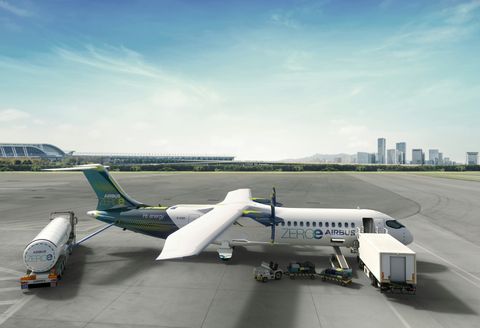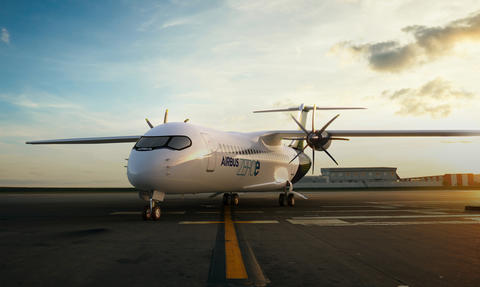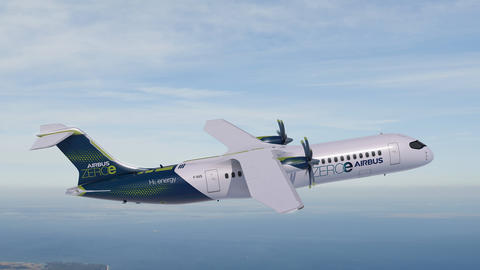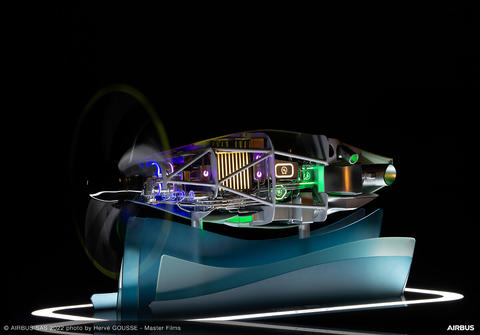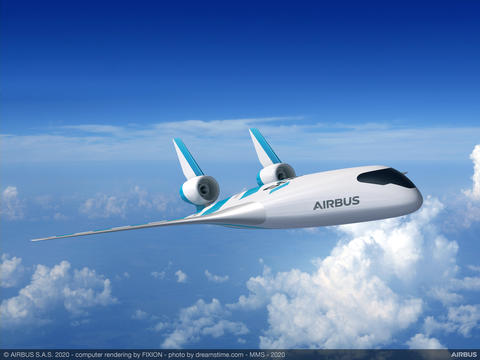Airbus’ ambition is to bring to market the world’s first hydrogen-powered commercial aircraft by 2035. To get there, our ZEROe project is exploring a variety of configurations and technologies, as well as preparing the ecosystem that will produce and supply the hydrogen.
Hydrogen propulsion to power future aircraft
All four ZEROe concepts are powered by hydrogen.
In the case of hydrogen combustion, gas turbines with modified fuel injectors and fuel systems are powered with hydrogen in a similar manner to how aircraft are powered today.
A second method, hydrogen fuel cells, creates electrical energy which in turn powers electric motors that turn a propeller or fan. This is a fully electric propulsion system, quite different to the propulsion system on aircraft currently in service.
These technologies are complementary, and the benefits are additive.
ZEROe Concept Aircraft
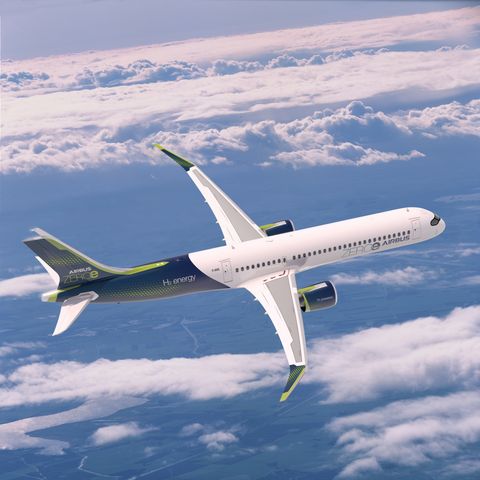
Turbofan
Range: 2,000+ nm | Passengers: <200
Two hybrid-hydrogen turbofan engines provide thrust. The liquid hydrogen storage and distribution system is located behind the rear pressure bulkhead.
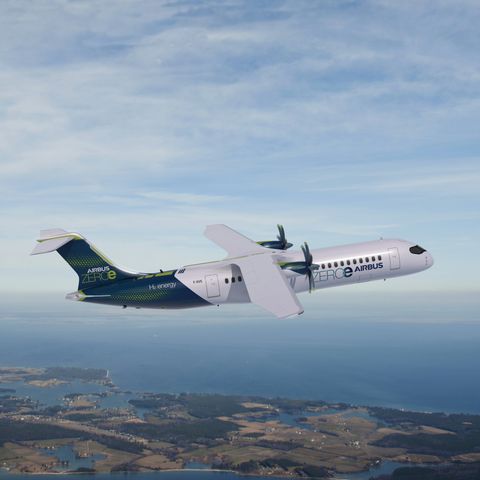
Turboprop
Range: 1,000+ nm | Passengers: <100
Two hybrid-hydrogen turboprop engines, which drive eight-bladed propellers, provide thrust. The liquid hydrogen storage and distribution system is located behind the rear pressure bulkhead.
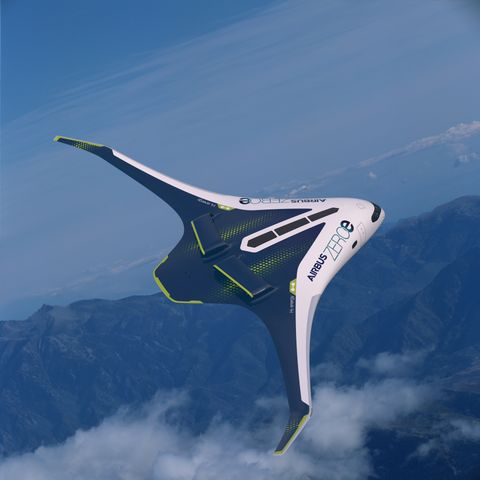
Blended-Wing Body (BWB)
Range: 2,000+ nm | Passengers: <200
The Blended-Wing Body’s exceptionally wide interior opens up multiple options for hydrogen storage and distribution. Here, the liquid hydrogen storage tanks are located underneath the wings. Two hybrid-hydrogen turbofan engines provide thrust.
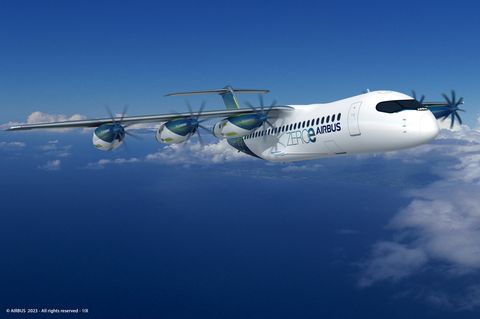
Fully electrical concept
Range: 1,000 nm | Passengers: <100
The fully electrical concept was revealed in December 2020. It is based on a fully electrical propulsion system powered by fuel cells.
Discover ZEROe concepts
Technology and Testing
Airbus is meeting a number of technology and testing milestones as it moves towards its ambition of bringing to market a hydrogen-powered commercial aircraft by 2035.
Many of these milestones revolve around establishing the means of propulsion, either via hybrid hydrogen-electric fuel cells or direct hydrogen combustion. Airbus has even established a joint venture with automotive supplierElringKlinger AG, Airbus Aerostack, to develop hydrogen fuel cell stacks at the heart of an electric propulsion system.
Airbus is exploring both hydrogen-combustion and fuel-cell propulsion technologies, for which demonstrators have been launched. It has also set-up dedicated Development Centres in France, the UK, Germany and Spain to work on tanks and cryogenic fuel systems.
Airbus test aircraft A380 MSN1 is taking the lead in testing these technologies that will be vital to bringing a hydrogen-powered commercial aircraft to market.
People
Meet some of the faces behind ZEROe, and read about the passions, dreams and ambitions that drive them. Want to join them? We’re hiring! Airbus is looking for the brightest and best to design the future of aviation. Find out which specialist skills and profiles are in demand.
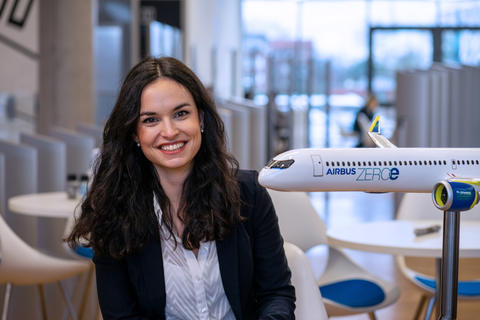
Meet Natalia
Fuel Cell System Engineer | Hamburg, Germany
As a Fuel Cell System Engineer in Hamburg, Natalia Medina Cabello brings her interest in renewable energy to life through her work on the ZEROe hydrogen-powered concept aircraft. Here she gives us an inside look at her responsibilities on the project and how she came to join the team.
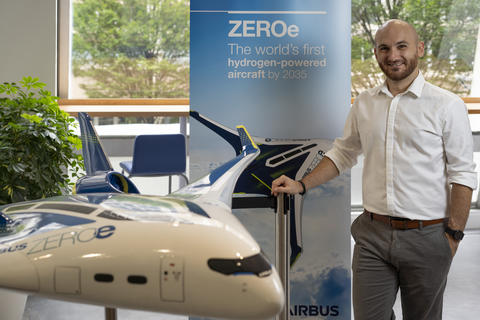
Meet Fabien
Value Assessment & A/C Economics | Blagnac, France
First inspired to join Airbus as a teen when he saw the A380 take flight for the first time, Sustainable Aviation Strategist Fabien Romero now assesses business models for another groundbreaking Airbus project: the ZEROe hydrogen-powered concept aircraft.
Ecosystem
The race for hydrogen-powered commercial aviation starts on the ground. Hydrogen has to be produced, transported and stored in the right quantity, at the right time, place and cost. Its production and use must be regulated and certified.
Airbus believes the deployment of hydrogen infrastructure at airports is a prerequisite to support the widespread scale-up and adoption of hydrogen aircraft. We’re partnering with hydrogen producers and distributors worldwide, airports and airlines to build the right ecosystem to operate a hydrogen-powered aircraft by 2035. We’re already bringing together all the key players to the table.
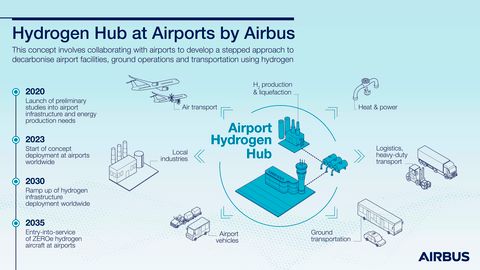
This concept involves collaborating with airports to develop a stepped approach to decarbonise airport facilities, ground operations and transport using hydrogen.
Discover our Airbus' ZEROe Series
The Countdown to ZEROe: Episode 1: Tanks
How does an aircraft fly using hydrogen? Whether hydrogen is burned directly or converted into electricity in fuel cells, it first needs to be safely stored at -253°! Find out how our teams in Toulouse, Nantes and Bremen are collaborating to design and manufacture innovative cryogenic storage that will enable hydrogen-powered flight.
Latest news

